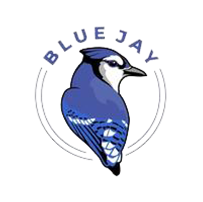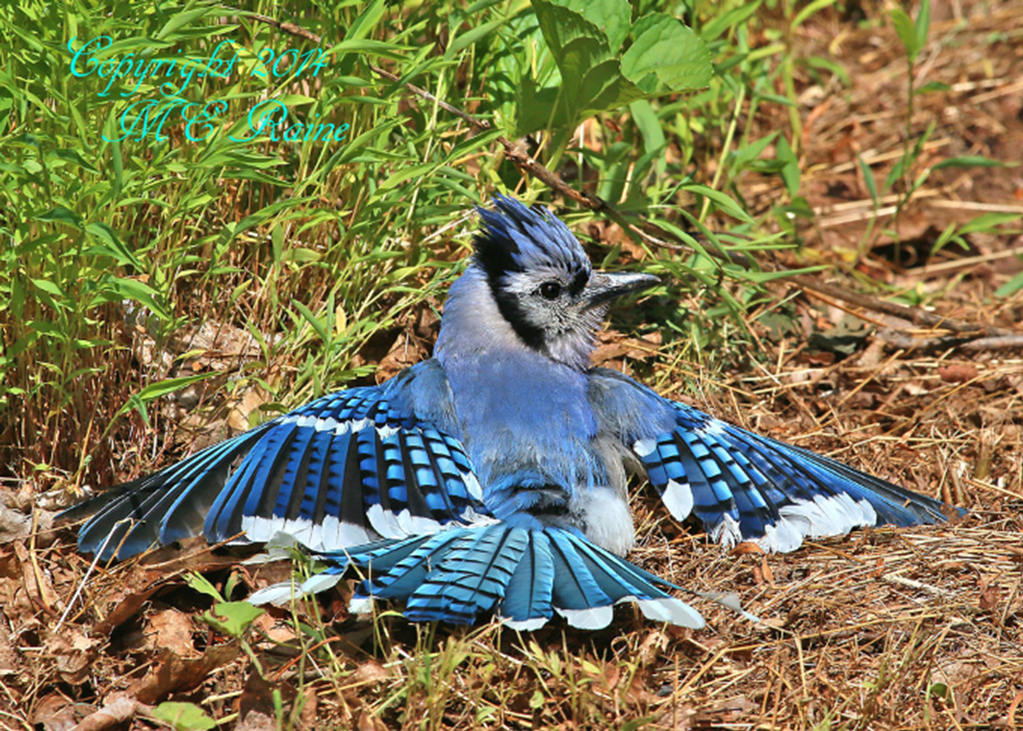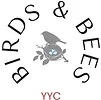The Bluejay’s coloration does not come from pigments but is the result of the internal structure of the feathers. If a blue feather is crushed, the blue disappears because the structure is destroyed. This is referred to as structural coloration.
Bluejays are highly curious and intelligent birds. Young birds often playfully snatch brightly coloured or reflective objects, such as bottle caps or pieces of aluminum foil, and carry them around until they lose interest. In captivity, Bluejays have been observed using strips of newspaper as tools to obtain food, while captive fledglings have been observed attempting to open the doors of their cages.
Bluejays may learn to mimic human speech. They can also copy the cries of local hawks so well that it is sometimes difficult to tell which it is.
Bluejays also have quiet, almost subliminal calls which they use among themselves in proximity. One of the most distinctive calls of this type, is often referred to as the “rusty pump” as it resembles the sound of an old hand-operated water pump.
Bluejays differ from most other songbirds in using their call as a song.
In the old African American folklore of the southern United States, the Bluejay was a significant metaphysical creature. In some tales, this bird was credited with making the earth “when all de worl’ was water” by bringing the first “grit” or “dirt”.
“Anting” & Blue Jays: Taking a bath or preparing dinner? “Anting” is the process in which a jay, with wings spread and tail tucked between its legs, grabs an ant in its bill and rubs it through its feathers before swallowing the ant. A couple of ideas have floated around over the years to explain why a bird might engage in this behaviour, and researchers Thomas Eisner and Daniel Aneshansley set out to determine which of the two was most plausible.
The first idea was that Bluejays were taking a bath in the ant’s formic acid, in the hope that it would rid them of the lice, mites and other parasites living in their feathers. Upon exposing those parasites to formic acid, however, scientists found that the acid has little to no effect on them. The second idea was that the Bluejays had found a way to make the ants tastier by removing the acid before swallowing the ants. Formic acid is very bitter, so most birds don’t even attempt to eat ants. Getting rid of the acid could open up a whole new food resource! If the Bluejays weren’t taking a bath, then perhaps they were preparing dinner?
To test this idea, Eisner and Aneshansley offered six different Bluejays two types of ants: one with the acid glands removed and one with the acid glands intact. When the birds encountered ants without acid, all six gobbled them up, no “anting” necessary, When they encountered ants with acid, however, the “anting” routine resumed. The presence of formic acid, therefore, appeared to trigger the behaviour! Excited, the ornithologists examined the contents of the ants before and after they were given to the Bluejays, and found that the acid had been completely ejected onto the feathers. Even more interesting, they found that the Bluejays grasped the ants so gently that they preserved the entire contents of the ants’ stomachs, retaining all the extra nutrients. The anting process allowed them to get rid of the disgusting flavor while maintaining the maximum amount of food in the ant. Once the formic acid is removed, they calculated that Bluejays only need to consume 10 ants to have eaten the human equivalent of one scrambled egg; quite a nutritious meal indeed!


